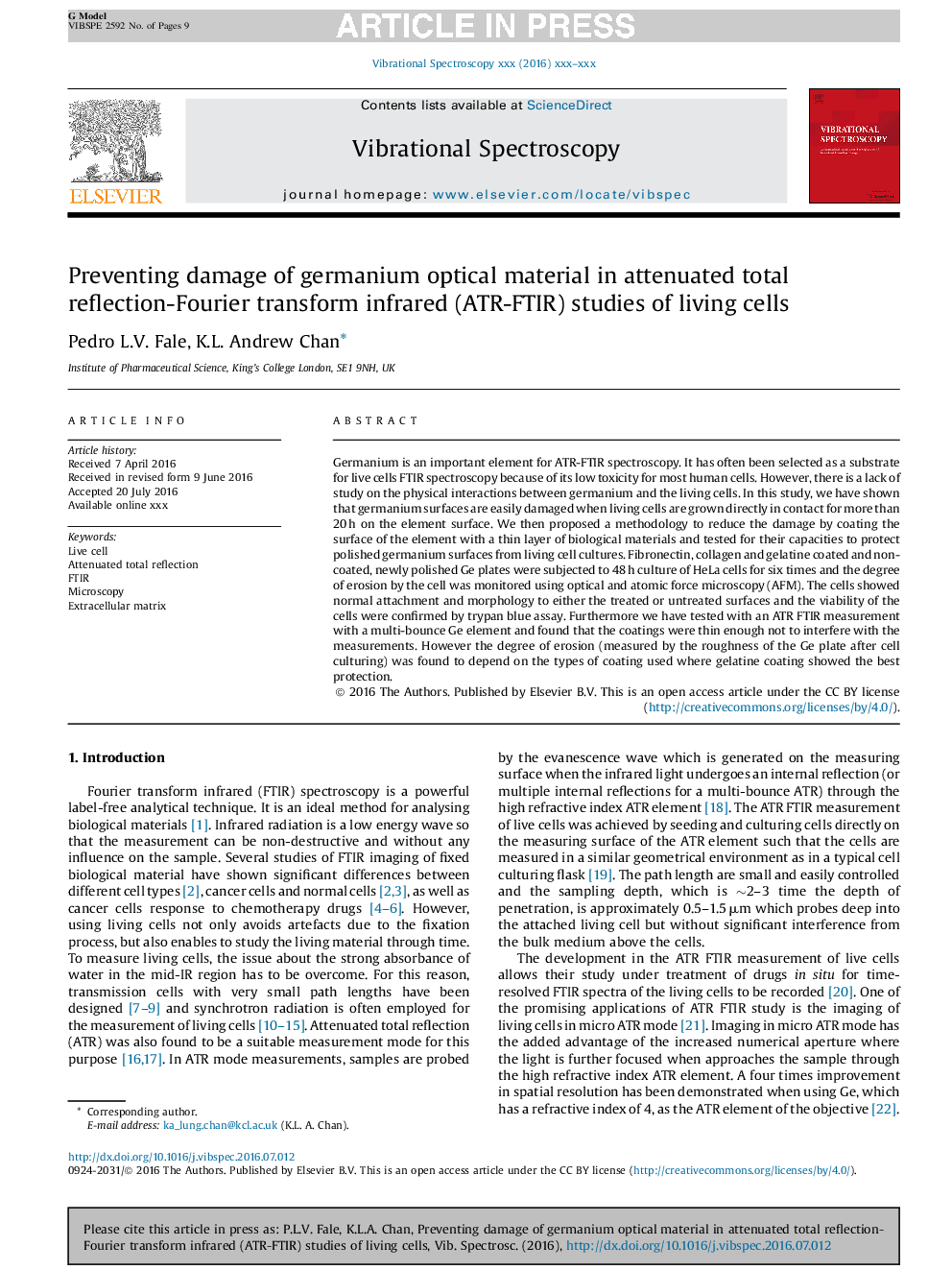| Article ID | Journal | Published Year | Pages | File Type |
|---|---|---|---|---|
| 5141868 | Vibrational Spectroscopy | 2017 | 9 Pages |
Abstract
Germanium is an important element for ATR-FTIR spectroscopy. It has often been selected as a substrate for live cells FTIR spectroscopy because of its low toxicity for most human cells. However, there is a lack of study on the physical interactions between germanium and the living cells. In this study, we have shown that germanium surfaces are easily damaged when living cells are grown directly in contact for more than 20Â h on the element surface. We then proposed a methodology to reduce the damage by coating the surface of the element with a thin layer of biological materials and tested for their capacities to protect polished germanium surfaces from living cell cultures. Fibronectin, collagen and gelatine coated and non-coated, newly polished Ge plates were subjected to 48Â h culture of HeLa cells for six times and the degree of erosion by the cell was monitored using optical and atomic force microscopy (AFM). The cells showed normal attachment and morphology to either the treated or untreated surfaces and the viability of the cells were confirmed by trypan blue assay. Furthermore we have tested with an ATR FTIR measurement with a multi-bounce Ge element and found that the coatings were thin enough not to interfere with the measurements. However the degree of erosion (measured by the roughness of the Ge plate after cell culturing) was found to depend on the types of coating used where gelatine coating showed the best protection.
Related Topics
Physical Sciences and Engineering
Chemistry
Analytical Chemistry
Authors
Pedro L.V. Fale, K.L. Andrew Chan,
